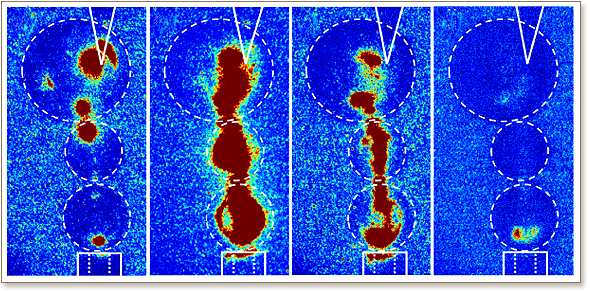

Ignition modes of nanosecond discharge with bubbles in distilled water
A. Hamdan, M.S. Cha
Journal of Physics D: Applied Physics, 48 (40), 405206, (2015)

Here, we present the microscopic physical characteristics of nanosecond discharges with an array of bubbles in distilled water. In particular, applying a single high-voltage pulse, four delayed intensified charge-coupled device cameras successfully visualized four successive images during a single discharge event. We identified three distinctive modes of ignition inside a bubble, depending on the relative location of the bubble with respect to pin-to-hollow needle electrodes when a single bubble was located in an inter-electrode gap of 1 mm: anode-driven ignition, cathode-driven ignition, and co-ignition near both electrodes. Anode- and cathode-driven ignitions evolved into either a complete propagation of the streamer or an incomplete propagation, which were limited in location by proximity to an ignition location, while co-ignitions consistently showed complete propagation. When we increased the gap to 2 mm to accommodate multiple bubbles in the gap, an ignited bubble near the cathode was able to cause the ignition of an upper adjacent bubble. Bubble–bubble interface zones can also be spots of ignition, such that we observed simultaneous co-ignitions in the zones of bubble–bubble interfaces and near electrodes with triple bubbles. We compared the experimental results of discharge propagation with different ignition modes between Ar, He, and N2 bubbles. In addition, numerical simulations for static electric fields reasonably supported observed ignition behavior such that field intensity was locally enhanced.